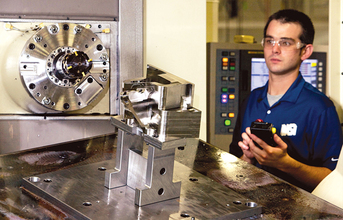
Unlike the ‘Sorting Hat' in the popular Harry Potter book series by JK Rowling that made decisions quickly and intuitively, sorting out the best ways to cut tough materials has taken a few years of chips soaring, spindles smoking, tools exploding, and brains frying. While that sounds like a spell gone wrong, that's the kind of magic we conjure in the metalworking industry.
Aerospace OEMs and their parts suppliers have been grappling with the influx of hard, difficult-to-machine materials, such as titanium 5553 and tough stainless steel grades. These materials have grown quickly in application because they are strong, flexible, light in weight, corrosion-resistant, and can take the heat. These characteristics are carrying over into the jet engines where the rotating parts can run hotter and be made smaller, and into such skeletal parts as struts, floor ribs, window frames, door hinges and engine mounts to enhance structural integrity. Thanks to these challenging materials, all of these new components ultimately assemble into aircraft that require lower fuel costs to fly.
The newer generation materials make up 15 percent of the weight of the latest jet fleets, such as the Boeing 787 Dreamliner. In each airplane there will be about 21,000 pounds of these heavy metal parts that will be machined out of 240,000 pounds of raw stock. The volume of titanium used in aircraft in 2012 was projected to be at 100 million lbs. (45,359 tonnes). Remarkably, this represents only 35 percent of total titanium consumption.
|
About the author: Scott Walker is the President, Mitsui Seiki USA, Inc. and has 35 years of experience in machine tool design, engineering, technical sales, and marketing. He started with Mitsui Seiki in 1991 following various manufacturing management positions at Okuma Corporation and Pratt & Whitney Machine Tools. Walker holds an MBA from Rensselaer Polytechnic Institute and a BS in mechanical and aeronautical engineering from Wentworth Institute/Massachusetts Institute of Technology. |


























